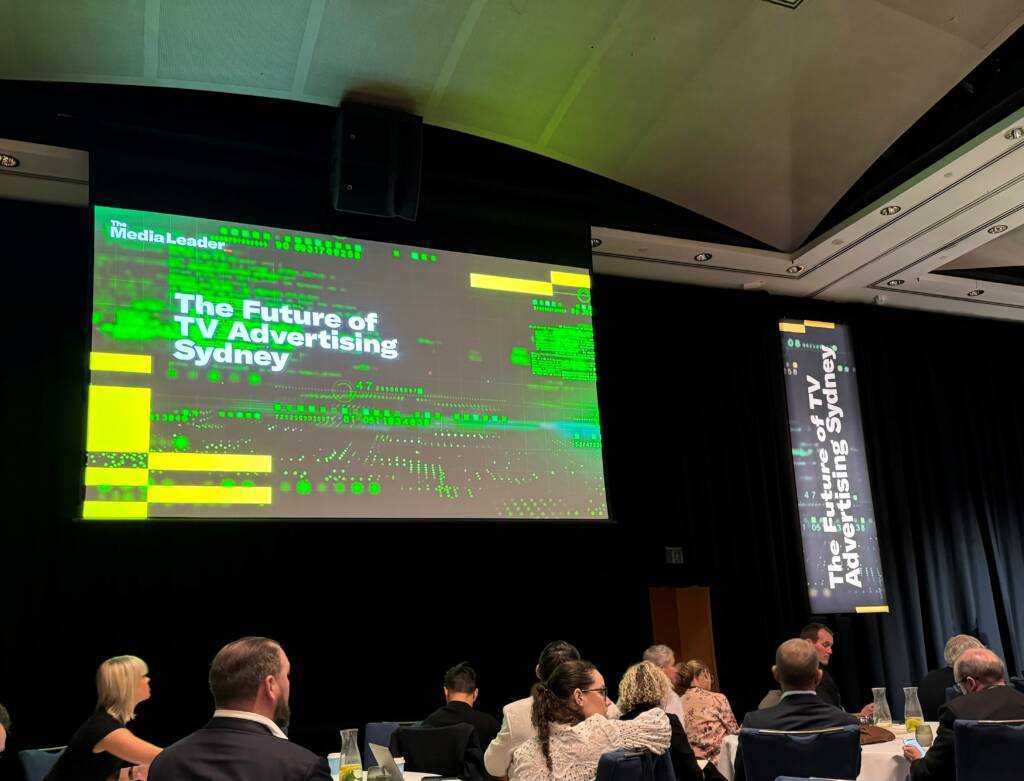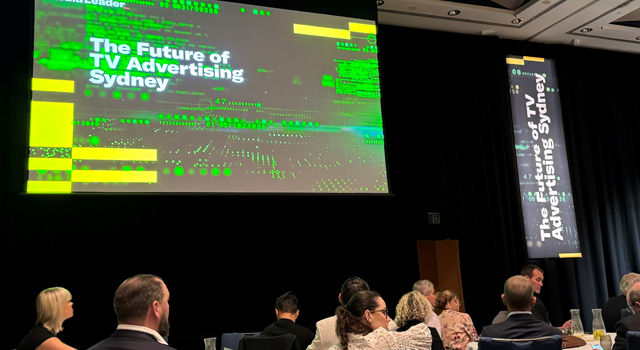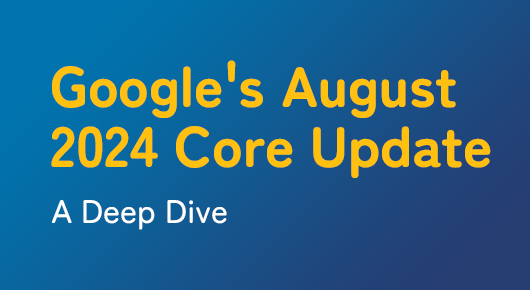What were the three major themes from the day?
There were many great contributors to each session and panel, looking at this complex issue from an array of backgrounds and perspectives. Across the day however, the most consistent themes centred on the why, what and how the television industry needs to adapt to maintain a strong share of advertiser investment.
Why is Television still worth its place in a multimedia mix?
There was, as expected, sessions focused on sustaining television’s place within the marketing agenda for advertisers (more specifically linear broadcast). Some argue TV is being undervalued in the role it plays in enhancing results, but this is always swiftly followed by an acknowledgement of the challenges of TV attribution versus digital comparisons.
– Lifting campaign performance
There have been multiple pieces of research speaking to the impact television has on lifting campaign performance and improving brand metrics, yet these have had mixed success in getting true buy-in when tabled to senior client stakeholders. So, one of the more exciting prospects continues to be the role Marketing Mix Modelling can have in delivering an offline media attribution solution. Speaking to what clients need to justify TV spend, Cameron Luby (Optus) and Joshua Grace (Colonial First State) spoke confidently to the virtues of partner Mutinex in supercharging old school econometric modelling by speeding up the process, creating a more always on attribution format that helps in delivering shorter feedback loops.
Media Merchants have firsthand experience working with the Mutinex team and can attest the platform is compelling, not just for television, but across the board for offline media. The tool however requires a significant investment, both monetary and time, that can be less feasible for clients who aren’t a major telco or bank. It also requires the deeper media insights from agencies to translate broad channel performance into audience and objective led implementation.
It remains with agencies to champion the virtues of television to clients, leveraging work such as that was shared again by Jon Evans, from the great minds of Orlando Wood and Dr Iain McGilchrist, and from within our own proprietary toolkits. Will this be enough? For clients having the right brief and audience to substantiate it, yes it should be. However, the focus for agencies such as Media Merchants will always remain steadfast on meeting the client objective and delivering results. With Television under scrutiny for declining audiences, rising costs and demographic gaps, the virtues of the creative format itself, still don’t fully address these clear challenges.
What are the challenges TV can’t keep ignoring?
– Declining audiences.
It makes sense in a market where fragmentation of media outweighs that of population growth that broadcasters are challenged to deliver the same level of reach as easily and via the same methods as they have historically. The goal is diversification and modernisation, which all of the day’s speakers recognised. But where lies the greatest opportunities for broadcasters?
– Diversification: the future of TV is streaming.
With just over 80% of Australian households having smart TVs, the preference to stream content is only rising. Modern viewers want control of what content they wish to view and when they do it, there simply isn’t any going back, especially when looking at scripted content (and even unscripted is increasingly falling into this camp). To meet this changing dynamic, broadcasters are adding subscription and FAST channels to their portfolios, while improving the commercial offering and content on BVOD.
The current challenge is that FAST channels and BVOD are not evolving fast enough (yet) to compete and gain share back from large streamers like Netflix, Disney and Amazon. For example, 8% of 18–64-year-olds are viewing FAST channels in Australia, versus 36% in the US, so there is much to still be gained. It’s the right strategy, and I think in the current climate of rising cost of living they should be more aggressive in going to market heavily to promote their free streaming opportunities as consumers evaluate costly monthly subscriptions. There is still a large contingent of the population who simply don’t know the breadth and possibilities in these freely available extensions, and if they can be converted and won, the advertising dollars will soon follow.
– Modernisation: time to “risk the biscuit” to improve tech and data offering to advertisers.
This really needs to be across two areas for broadcasters. The first is to stop desperately hanging on to program formats that have become cyclical and tired (we all know the ones). Start embracing what you’re good at, which is unscripted content and quality Australian scripted drama and premiere this on streaming platforms. Stop using it to try drive audiences to linear and accept the migration away will happen regardless, the focus now is gaining more of the streaming audience rather than trying to protect or win back linear viewing.
The other crucial aspect of modernisation is improving the technology that will enhance the decision making and buying capabilities for advertisers. As one speaker said so articulately, broadcasters need to ‘collaborate on tech, compete on content’, which at present isn’t the case and each is still trying to protect share by differentiating on tech and data. This is to the detriment of the channel as a whole and until they are prepared to collaborate on local efforts to improve data and technology then the big global tech companies will continue to win. Broadcasters must accept the risk of opening up to collaboration and stop trying to run their own races and support individual agendas. Easier said than done, but inherently the only way forward.

How will TV move forward and retain advertising investment?
As just noted, the how comes down to how willing players are to collaborate and meet the markets’ desire for more uniformity of data and capabilities within technology. Last year, Foxtel announced their decision to work with Kantar on an alternative TV currency to VOZ’s Total TV, and last week further announced the Video Futures Collective (VFC) think tank.
Foxtel CEO, Mark Frain, sought to position the VFC as an inclusive discussion between streamers, broadcasters and publishers to influence industry best practice by gaining consensus on reporting metrics, collaborating on measurement models and planning and trading platforms for agencies.
While this initiative bodes well at bringing parties together, there is still a concern that the efforts could result in being more lip service versus eliciting the innovation required. I would hope to be very wrong on this, as the goals of the VFC will enhance TV and video streaming buying for agencies, but the undercurrent attitudes present across the day at the Future of TV Advertising event still left an impression of many walls still being up and closely guarded between the big players.
Lastly, but not any less notable, was the final discussions toward VOZ and its belated but final launch to market earlier this year. Karen Halligan had the unenviable task of fronting up as CEO of OzTam and speaking to VOZ after only being appointed in October last year. VOZ brings together data inputs from OzTam and Regional TAM ratings and BVOD viewing from OzTAM’s VPM (video player measurement) to offer a de-duplicated national Total TV audience figure. Many critics are quick to point out that it’s been five years since VOZ was announced and while having finally launched is still yet to be ready for trading by agencies (Halligan stated this is pending full integration with MediaOcean but hoping this eventuates in the second half of 2024), and will also need to work to complement Foxtel’s own measurement system which launched late last year (working with Kantar).
But to criticisms we must acknowledge that Australia is the only country in the world to offer a product for fully integrated linear and BVOD measurement for both content and commercials. As a pioneering product VOZ has had to pave a complex path while also gaining the support from agencies and networks in accepting the platform as trading currency. All of this no mean feat, so while not perfect, the Total TV currency does show an improved view on modern TV viewing which we will embrace and apply within our own approaches to analysis and trading.
Final Thoughts
I didn’t expect The Future of TV Advertising event to present firm answers to complex challenges. What I found the day most valuable for was in driving discussion, at times uncomfortable, but ultimately frank and earnest in the fact that for broadcasters, agencies and advertisers alike, there is a desire to ensure TV has a robust future within the Australian media landscape.
Sitting on the side of advertiser and agency, what I’d like to hope comes from the day would be:
- Well firstly anything. For everyone to have invested the money and time into this day should warrant major players to listen and act. To return in 2025 and find the same agenda and no outcomes from think tanks such as the Video Futures Collective would indicate the idea of collaboration or innovation is unattainable.
- A reminder that TV is a powerful platform, not all screens are equal and as agencies it’s still our job to rationalise its inclusion for clients whose audience and objectives suit. The TV industry is undoubtedly held to a high standard of reporting, but if they can deliver and support this with improved content, data and technology they will find many are still willing and eager to invest.
- Broadcasters developing more opportunities and capabilities to deploy client data and trade across formats within their ecosystem to support customer experience and advertiser efficacy. Ultimately, the ability to do this well and better than the big global tech competitors, will deliver the results agencies and clients seek, and this determines where we continue to spend more than anything else.







